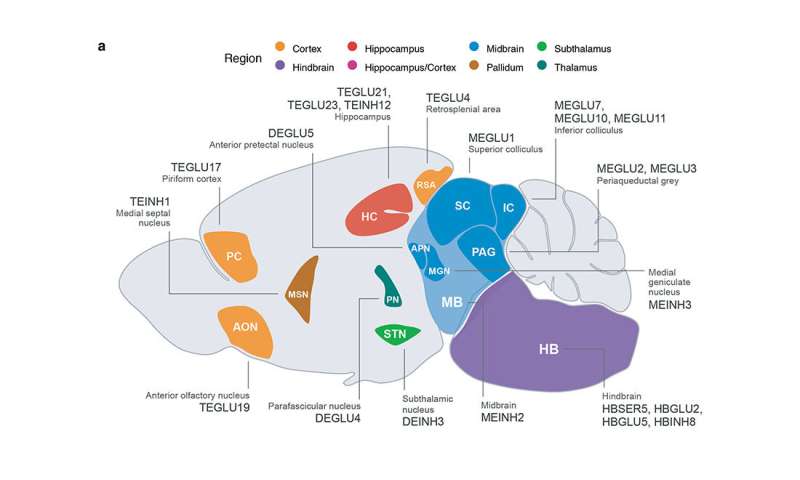Genetic risk of developing obesity is driven by variants that affect the brain


Some people are at higher risk of developing obesity because they possess genetic variants that affect how the brain processes sensory information and regulates feeding and behavior. The findings from scientists at the University of Copenhagen support a growing body of evidence that obesity is a disease whose roots are in the brain.
Over the past decade, scientists have identified hundreds of different genetic variants that increase a person’s risk of developing obesity. But a lot of work remains to understand how these variants translate into obesity. Now scientists at the University of Copenhagen have identified populations of cells in the body that play a role in the development of the disease—and they are all in the brain.
“Our results provide evidence that biological processes outside the traditional organs investigated in obesity research, such as fat cells, play a key role in human obesity,” says Associate Professor Tune H Pers from the Novo Nordisk Foundation Center for Basic Metabolic Research (CBMR), at the University of Copenhagen, who published his team’s findings in the internationally-recognized journal eLife.
“We identified cell types in the brain that regulate memory, behavior and processing of sensory information that are involved in the development of the disease. Further investigation of these areas of the brain may tell us why some of us are more susceptible to develop obesity than others.”
A mosaic of brain cell populations contribute to obesity
The discovery was made by developing computational tools that combine two different sets of data. The first set is genome-wide association study data from around 450,000 people. This data compares a person’s health and physical attributes, such as their body weight, to their unique genome. Doing so reveals that people with obesity are much more likely to have a range of genetic variants in common.
The second set is single-cell RNA-sequencing data of more than 700 different types of mouse cell populations. Different cells express different parts of the genome, so this data set contains the unique genetic fingerprint for each cell population.
The team at CBMR integrated the two data sets and found that the genetic variants, which are strongly associated with obesity, are near genes expressed by 26 cell populations acting as different types of neurons.
Obesity is not a lack of willpower
We already know that the brain plays an important role in obesity by regulating how the body maintains its energy needs. It does so by processing signals from within the body about the energy stores and food intake, as well as external signals such as the sight and smell of food.
The new findings suggest that a person’s risk of developing obesity is driven by populations of cells that process sensory stimuli and direct actions related to feeding and behavior. They also identified specific brain cell types that support a role of learning and memory in obesity.
“The next step is to explore how defects in parts of the brain traditionally known to regulate memory and integration of sensory signals actually makes us more vulnerable to become obese,” says Tune H Pers.
Source: Read Full Article